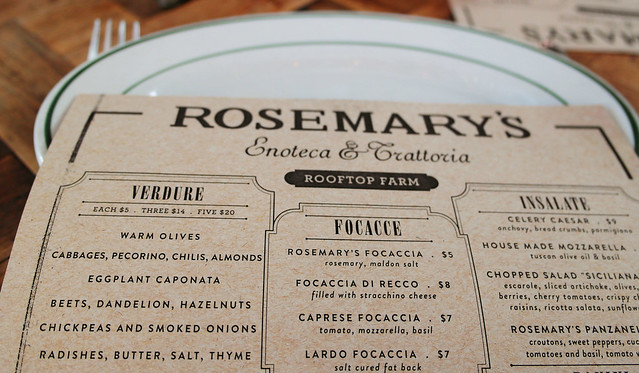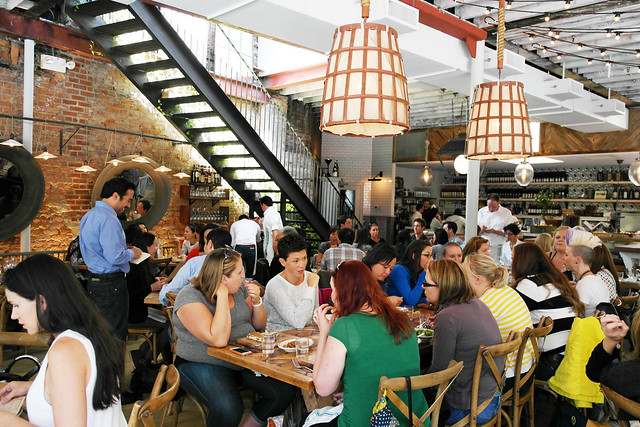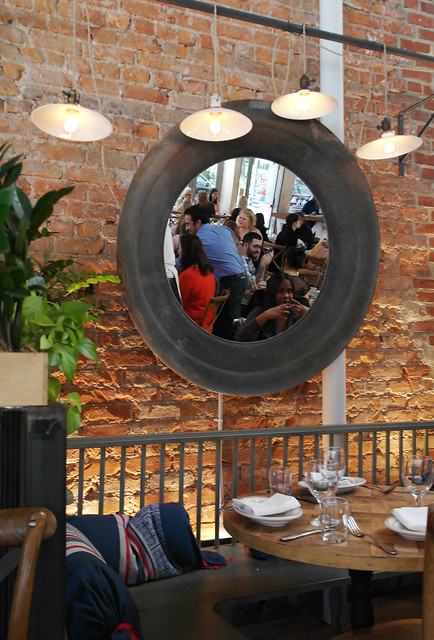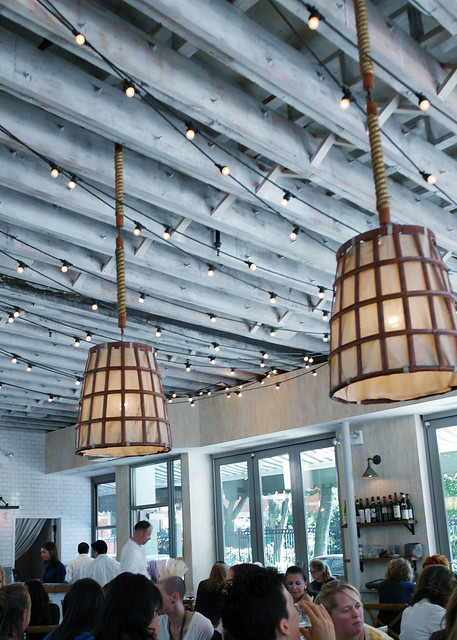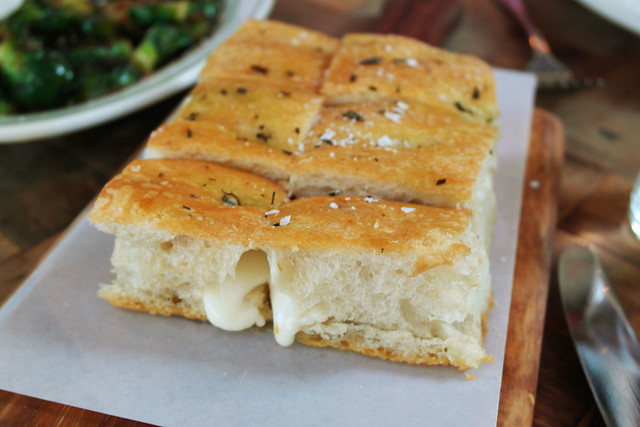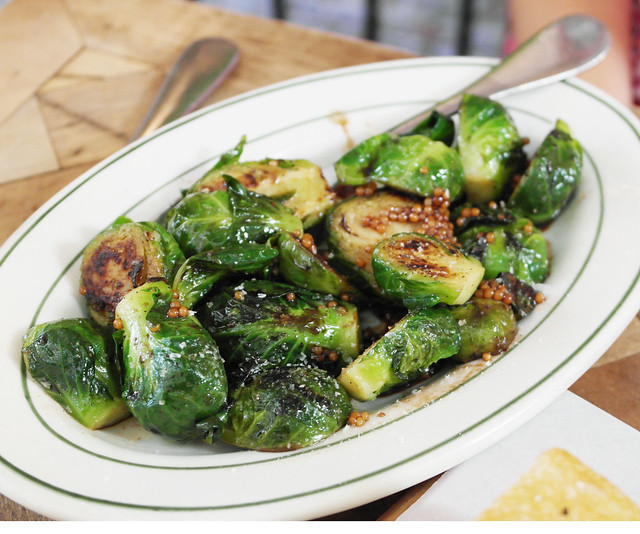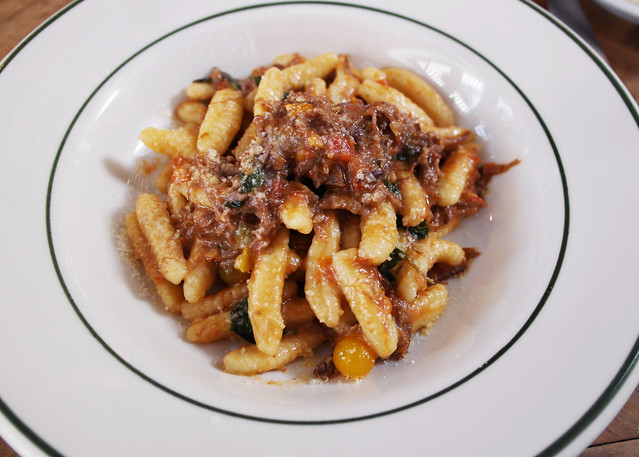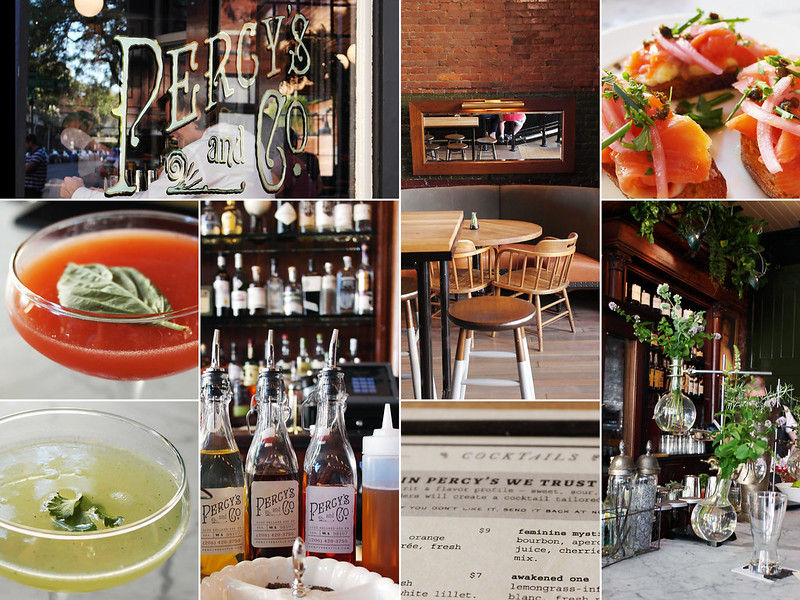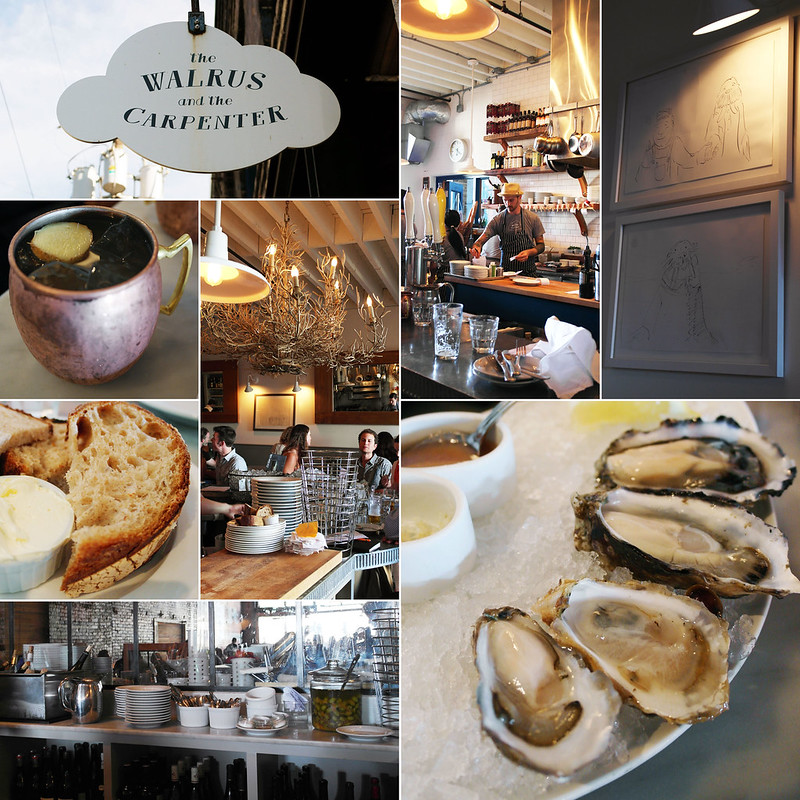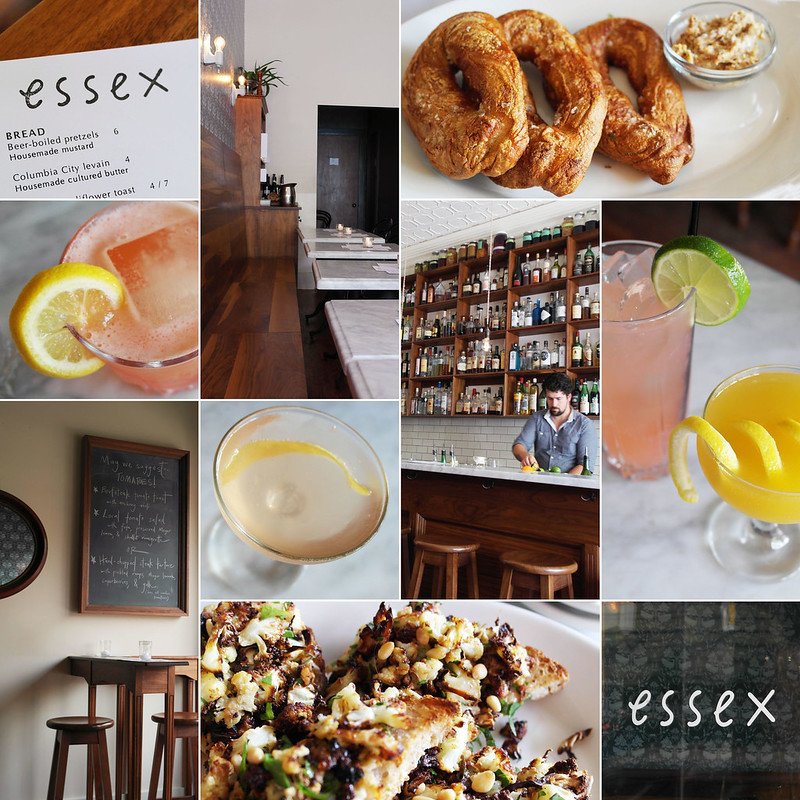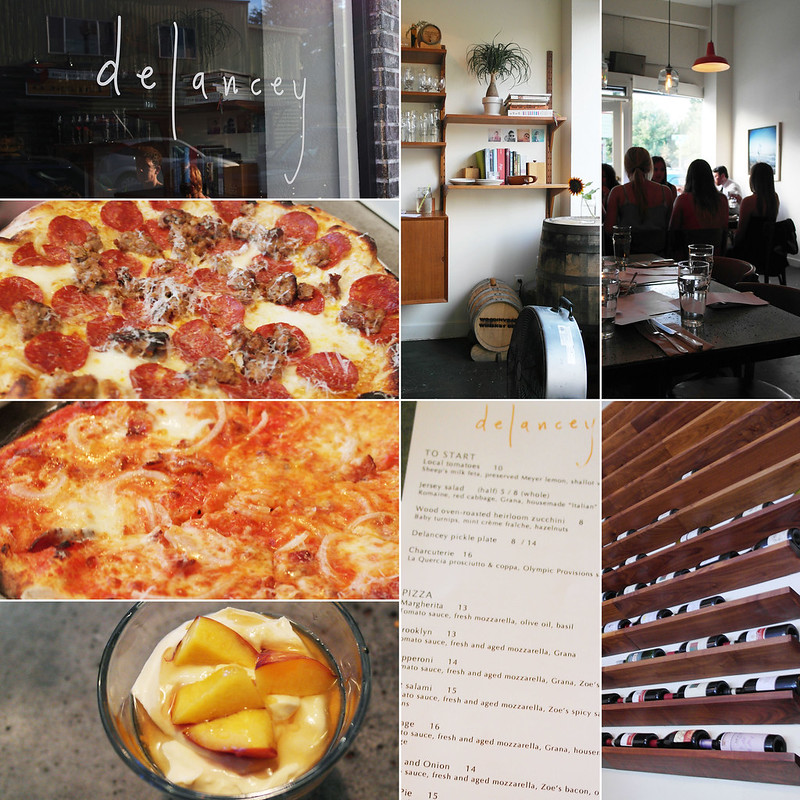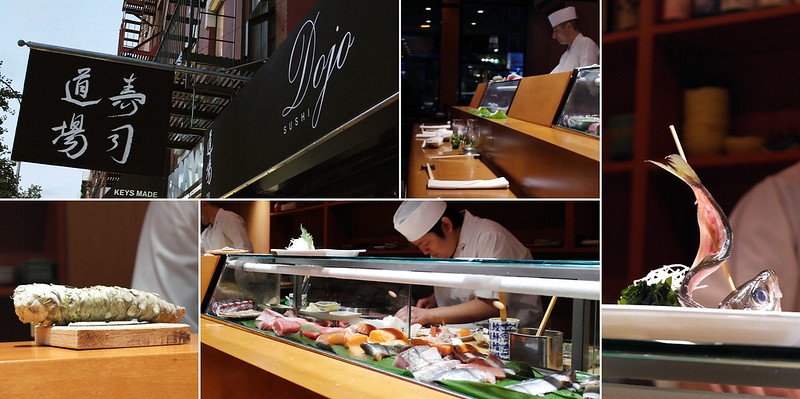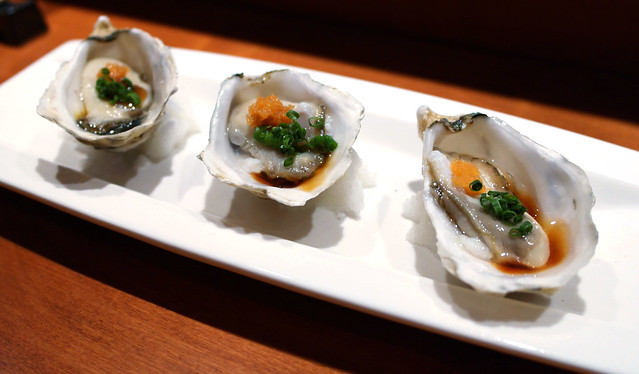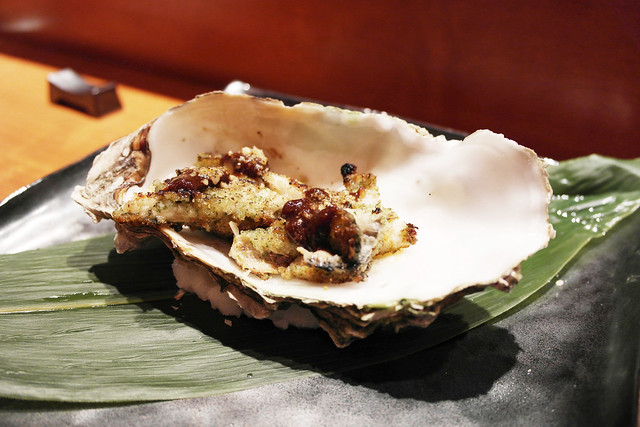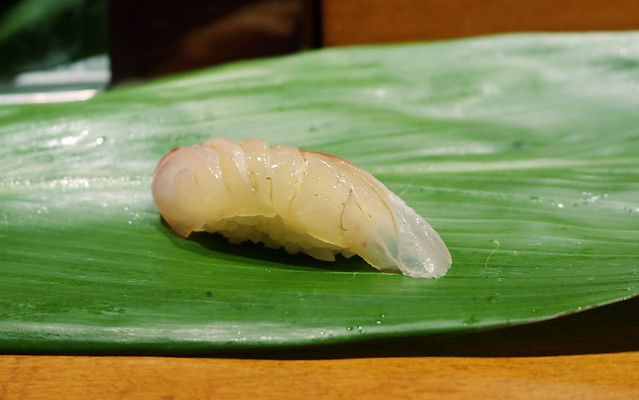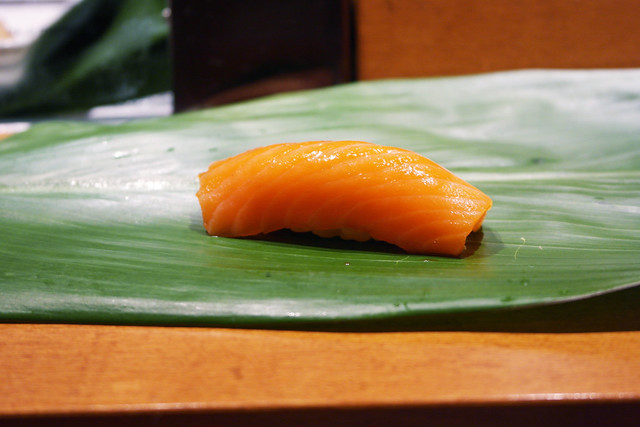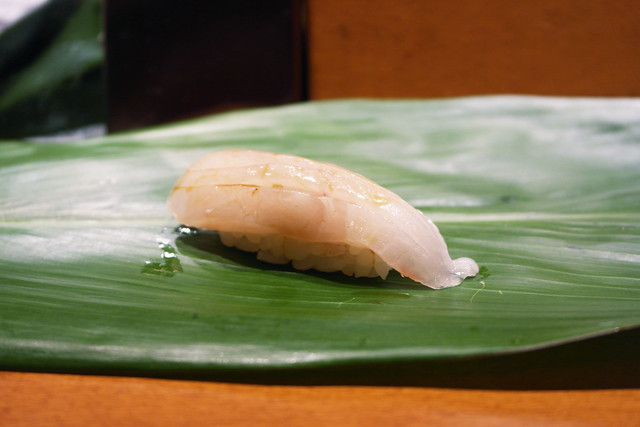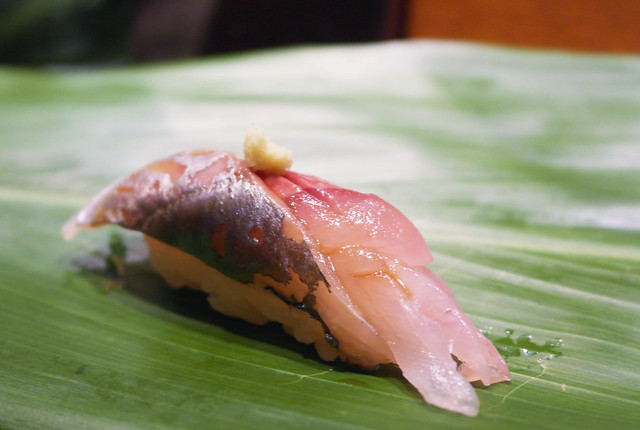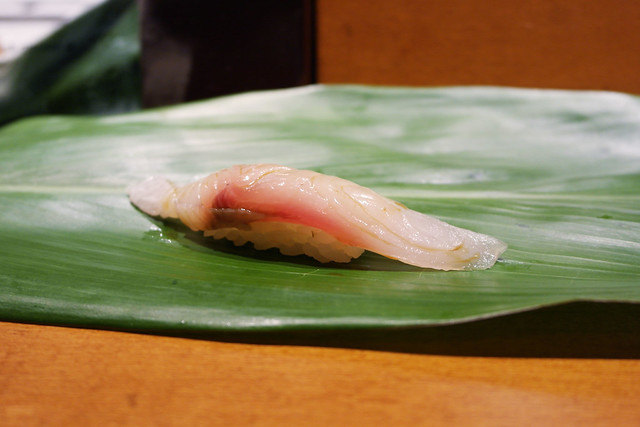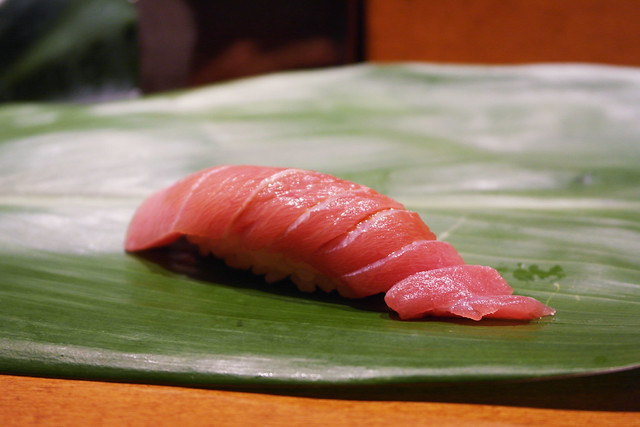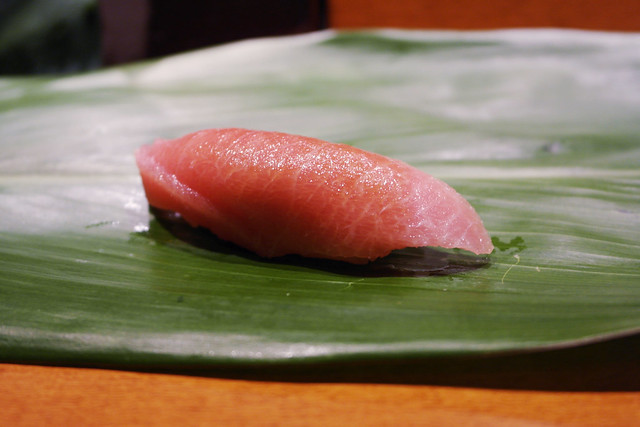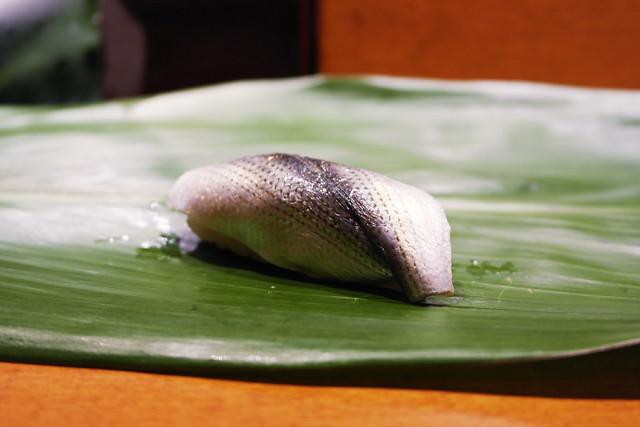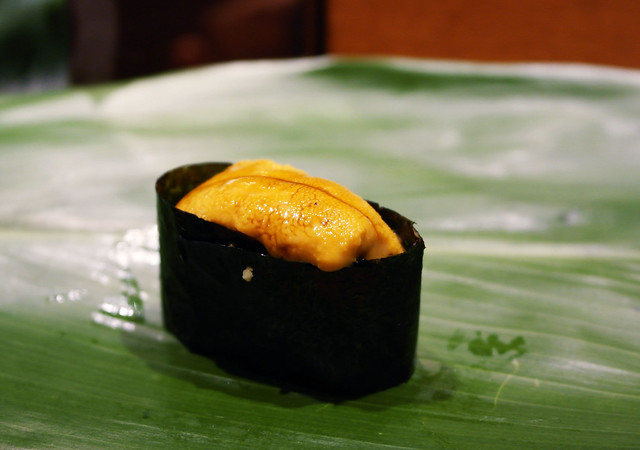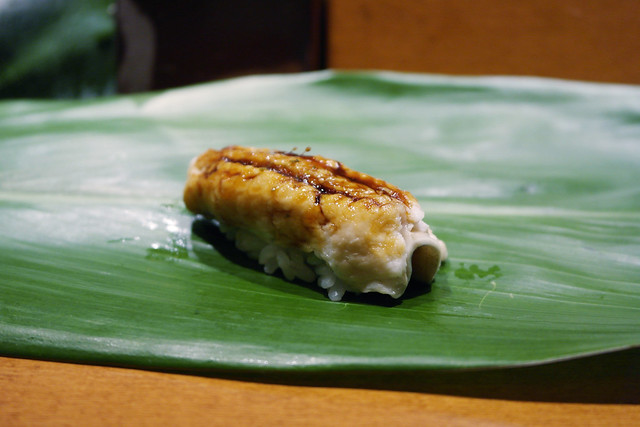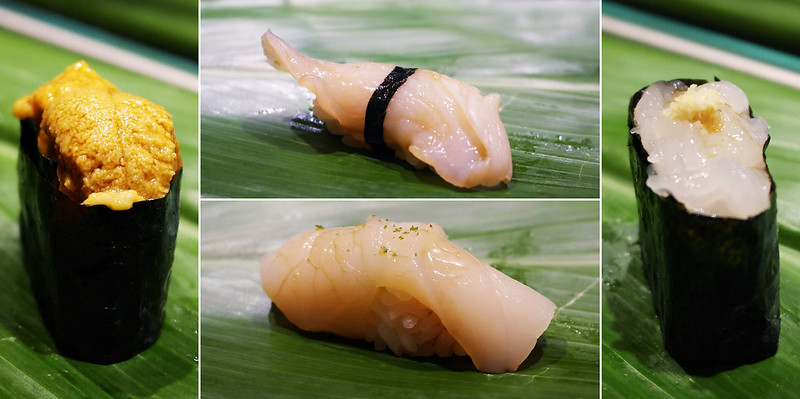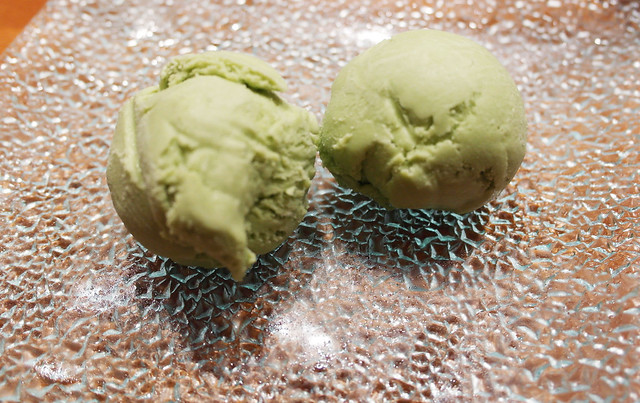Last weekend, it was time for
our yearly tradition since 2010 -- another
farm dinner with
Outstanding in the Field (
OITF) during one of its NYC stops. It was crazy to think that we (including
Linda, John, Jess, and John) bought our tickets back in March (on the first day of Spring!) for this much anticipated dinner in mid-September. This would be my fourth dinner since Linda introduced me to
OITF, and I was every bit as pumped as I had been that very
first time in 2010. Plus, it was even more special for Jess's John (I will refer to him at JJ from now on :P) as this was his first time at an
OITF event!

Our
dinner last year was supposed to take place at
Brooklyn Grange (an acre-sized rooftop farm in Queens we had all been to together
two years ago), but due to some bureaucratic hurdles, it was moved to La Plaza Cultural at the last minute (which was also lovely, but in a different way). We were thankful to have another opportunity to enjoy an evening at
Brooklyn Grange this time without a hitch -- this year, we were very excited to have Chef Sisha Ortuzar of
Riverpark curating our literal farm-to-table dinner. Given how much I had been blown away by the restaurant's NYC Restaurant Week lunch menu (something that is typically watered down and may not properly showcase a restaurant's menu well)
last year, so I knew we were really in for a real treat if Chef Ortuzar could really pull out all the stops here.
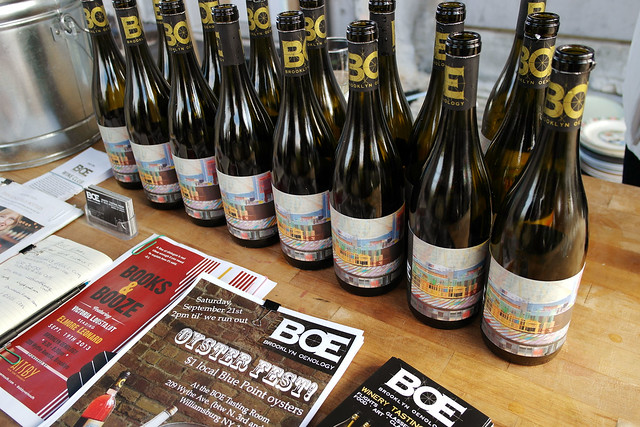
Upon checking in around 4 PM,
Brooklyn Oenology started us out with its
2012 Social Club white wine, a chardonnay-based blend, to be paired with the hors d'oeuvres that had started making its rounds through
Brooklyn Grange's grounds. The wine has a "food-friendly acidity, with notes of crisp apple, pear, and a touch of tropical fruit, while finishing with orange blossom and a lingering, palate-cleansing minerality."

One of the first bites we had were the
rabbit rillettes with late summer berries and summery savory, which, funny enough, did not taste like rabbit at all! Upon these first bites, none of us had seen the printed menus at our seats so our next best guesses were crab or chicken. Boy, did they have us fooled, especially myself, since I usually do not like the gaminess of rabbit one bit. However, in this case, it was actually quite nice with a little tart from the summer berries and lightly creamy from the rillette base. Something else to note is how well toasted the circular cut-outs of bread were, as each bite had that lovely crunch without getting soggy from the
rillette spread on top.
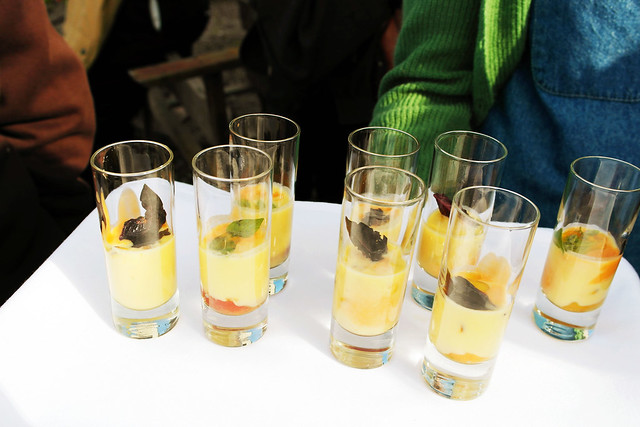
Next up were these flutes of
tomato & corn soup. For someone who doesn't really believe in chilled soups, these sweet shots of fresh summer could surely change a gal's mind. It had this richness to it that was not heavy or creamy in the traditional way a soup is but creamy in a magically fluid way. Little splashes of concentrated oil added some color and flavor to this beautifully emulsified soup, which reminded me of the
chilled corn soup with red peppers and shiso I had at
Riverpark. Not gonna lie -- I may have had another one of these shortly after I had my first one! :x
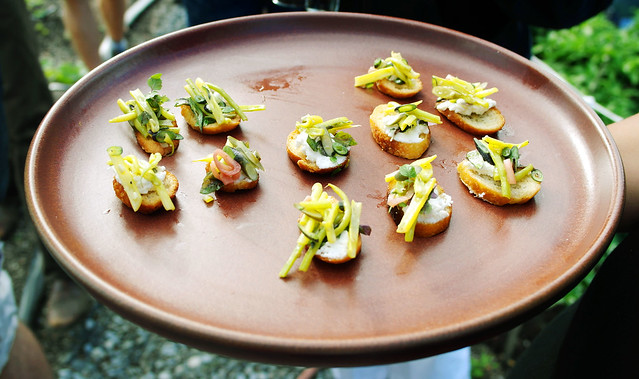
Last of the hors d'oeuvres were the
ricotta crostini with pole beans, pickled shallots, and shiso. This had a fun interplay of creamy from the fresh ricotta, of bite from the pickled shallots, and of summer from the just-picked pole beans. The fact that the produce used as ingredients in these bites made them that much more appealing -- can't get any more "farm-to-table" than this!
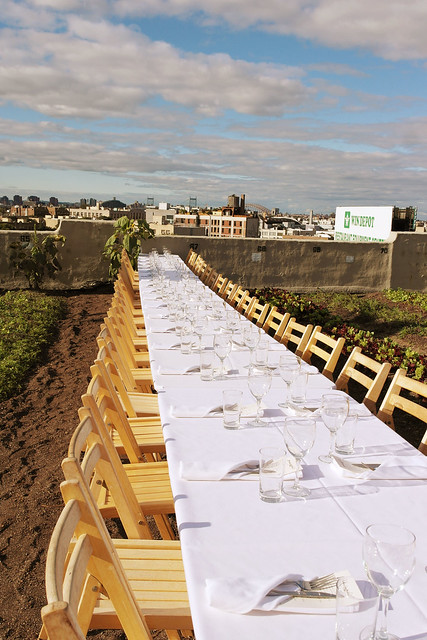
Traditionally, OITF has set the "long table" at farms, at gardens, on mountaintops, in sea caves, on islands, and at ranches -- wherever its tours would take the table. Because of the limiting confines of the farm being on a rooftop, the tradition of
OITF's "long table" at its farm dinners had to be slightly adapted by splitting the dining table into two shorter tables to fit comfortable on the grounds while accommodating all guests.
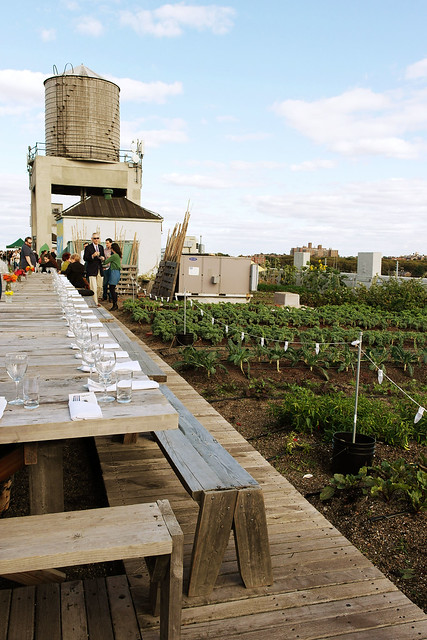
Here's the other table that was already set up at
Brooklyn Grange. We decided to sit at the other table as it made for easier conversation because of the shorter table width.
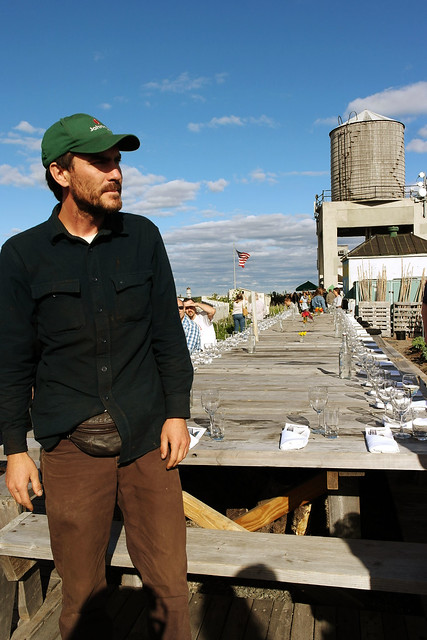
While everyone enjoyed the hors d'oeuvres, host farmers Ben Flanner (above) and Anastasia Plakias gave small group tours of the farm while giving a brief overview of what
Brooklyn Grange is all about.
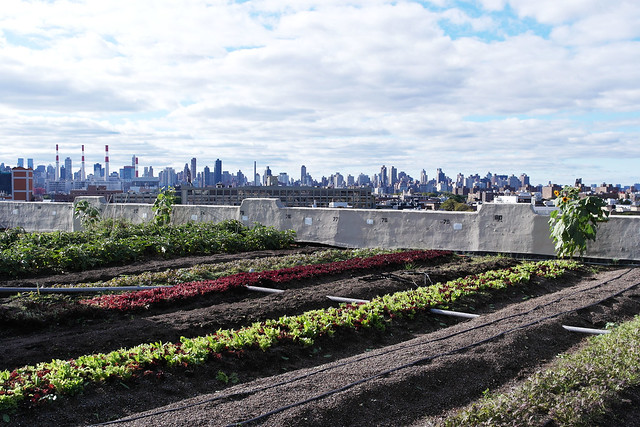 Brooklyn Grange
Brooklyn Grange's crops and the view of the city skyline in the backdrop.
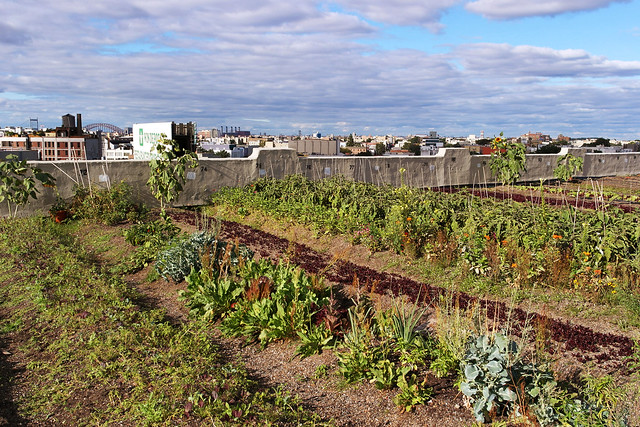
More shots of crops and skyline.
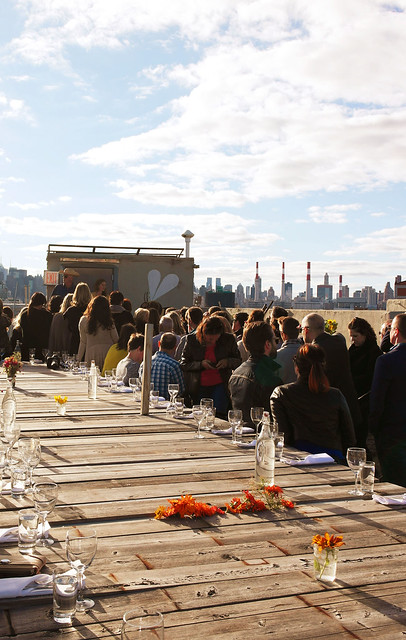
And of course,
OITF founder Jim Denevan gave opening remarks right before dinner was to start.
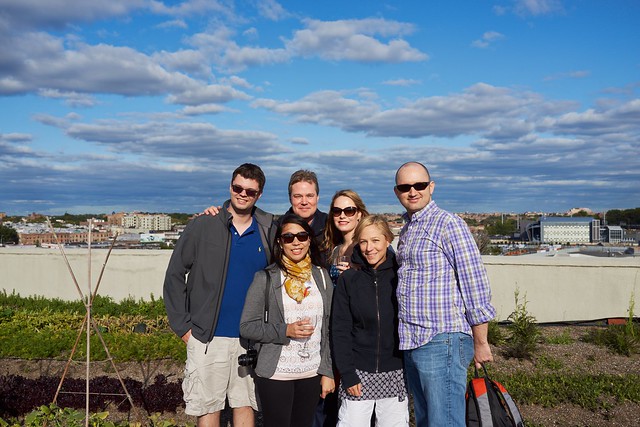
Our obligatory group shot!
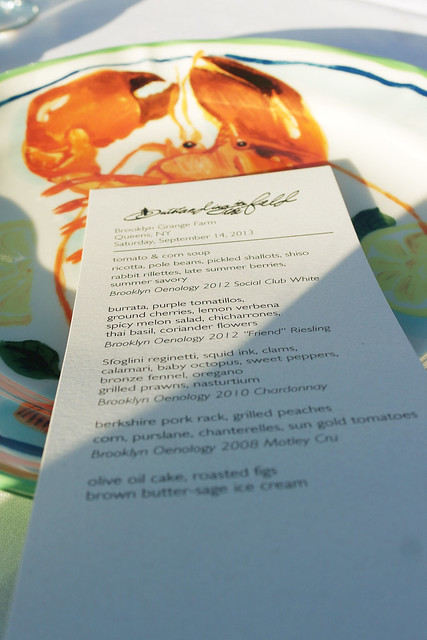
Another
OITF tradition is BYOP, i.e.,
bring your own plates, so I made sure to bring the
lobster plates Marcus bought for me a while back from Anthropologie (a throwback to
Friends: Phoebe's philosophy of "lobsters" as soul mates).
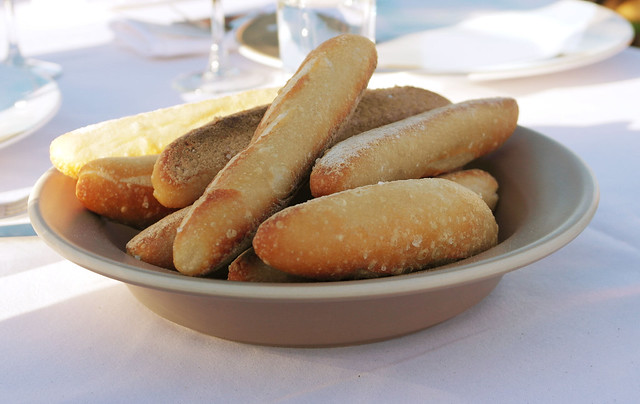
Fresh miniature baguettes from a local bakery whose name escapes me now. A fun fact that all of the sit-down serviceware are all pieces from
Heath Ceramics, one of the few remaining mid-century American potteries still in existence today, based in Sausalito, California.
All courses that arrive at the dining table are all served family style, to be shared among eight or so guests. We began the sit-down portion of our dinner with
Brooklyn Oenology's
2012 Friend riesling, which was on the dryer side and not too sweet. The little bits of residual sugar adds "wonderful richness perfectly balanced by an abundance of apples, Asian pear, white peach, nectarine, jasmine, and a hint of petrol with a crisp, clean finish of citrus, slate, and honey."
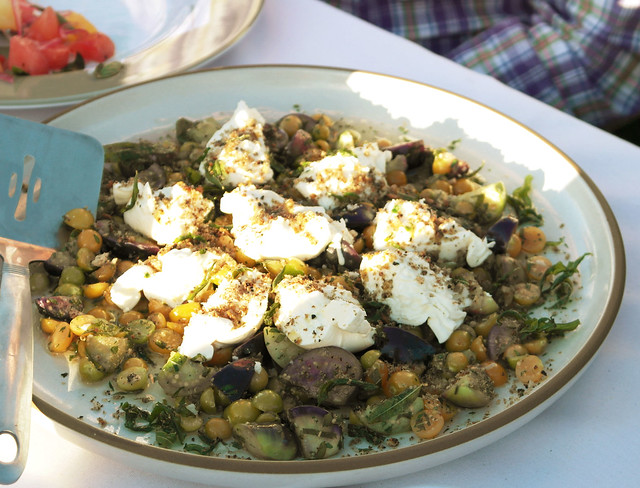
As our second course, they served us (fresh)
burrata with purple tomatillos, ground cherries, and lemon verbena. The
burrata was incredibly fresh, a pretty white blob of creaminess that complemented the tomatillos similarly to a delightful Caprese salad, just with a touch of stone fruit (gotta love cherries!) and herbed with the fragrant lemon verbena. This dish didn't even need dressing -- it remained undressed so that the
burrata could soak up the juices of the fruits without any distractions.
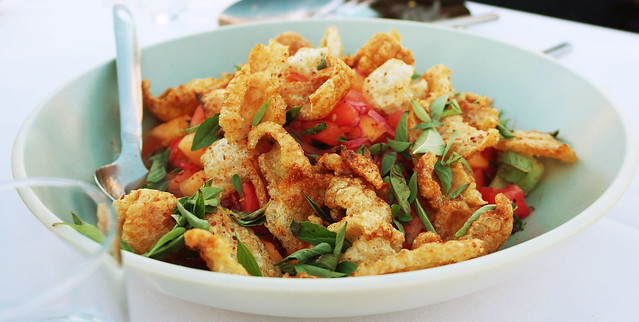
Alongside the
burrata, we also had a
spicy melon salad with chicharrones (i.e., fried pork rinds), Thai basil, and coriander flowers. This
salad was very much like a more "ethnic" version of a panzanella salad, where the chicharrones, watermelon, and Thai basil respectively acted like the expected day-old bread, tomatoes, and Italian basil. It was a very interesting twist, as the chicharrones and watermelon were dusted with some medium-hot spices, giving it a little heat and panache to stand out. A really refreshing salad bidding an honorable farewell to the warm days of summer.
Our next wine pairing was
Brookly Oenology's
2010 chardonnay, which deviates from the typical California chardonnays. Crafted in a Burgundy method, this chardonnay has a palpable "creaminess matched with great acidity and structure, with tastes of baked apple, dried pineapple, quince, coconut with layered vanilla and hints of smoke and honey." Essentially, it was a lot buttery than we may have liked.
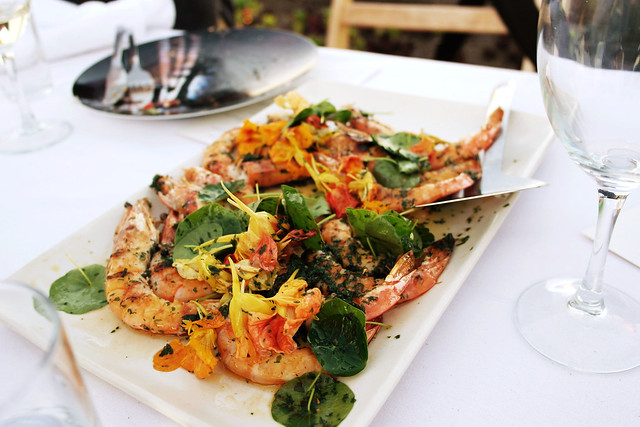
For our third course, we shared some
grilled prawns with nasturtium. The
prawns were sizable and juicy, and the added florals of nasturtium and splash of citrus gave interesting flavor and visual appeal. Grilling the
prawns with these herbs and seasonings and serving them cooled down made for a lovely summer-driven dish.
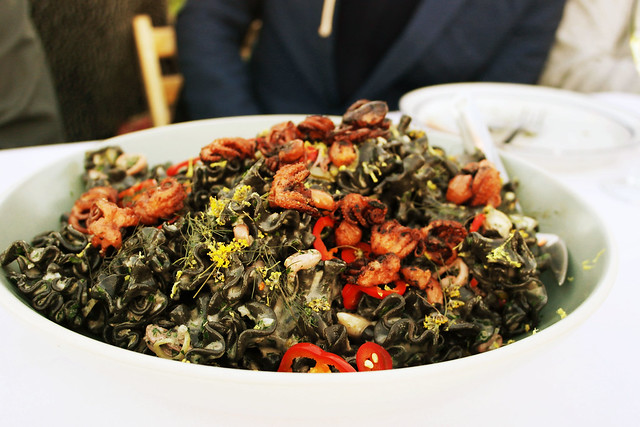
This was probably Marcus and I's most favorite dish of the night --
Sfoglini reginetti with squid ink, clams, calamari, baby octopus, sweet peppers, bronze fennel, and oregano. Reginetti is a ribbon-shaped (with wavy, ruched edges) pasta commonly served with more delicate sauces. Also served chilled, the
reginetti was simply delightful as the light cream sauce which had the most vibrant varieties of seafood and had the lightest kick from the peppers and fennel. The oregano gave a slightly earthy tone to the dish overall to counter the sweetness from the seafood. The inked
pasta was a divine
al dente, with the sauce swimming in its little crevices. What a well-thought-up course!
Our main course was paired with
Brooklyn Oenology's
2008 Motley Cru red blend with "a core of juicy cherry fruit and spice on the palate." Very much like a Rhône-like wine, the wine is "round and soft with great acidity and fine tannins with a medium body and a texture of a robust pinot noir."
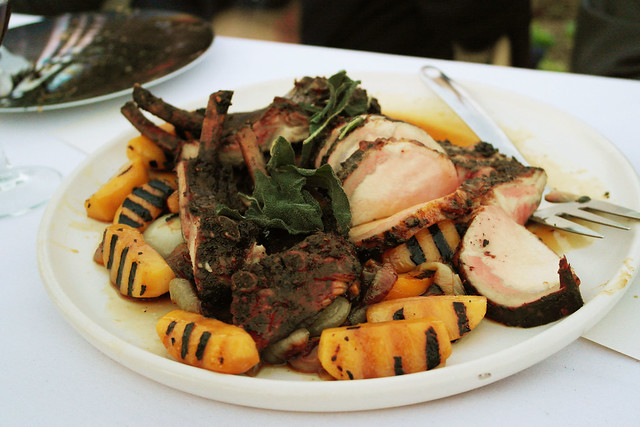
The fourth course was a
Berkshire pork rack with grilled peaches. Not many things say summertime like grilled peaches do, and that's exactly how I felt here. They had smoky grill marks and ended with a sweet bite (in that limbo between a bruised ripedness and a firm under-ripedness. The cuts from the
pork rack had a nice exterior of fat (plus the bone from it being prepared as a rack) that the meat soaked up in flavor and juice. Pork can easily be overcooked into something really unflavorful, tough, and difficult to eat, but this
pork rack was so tender, soft, and tasty, especially as pork is always well-complemented with stone fruit.
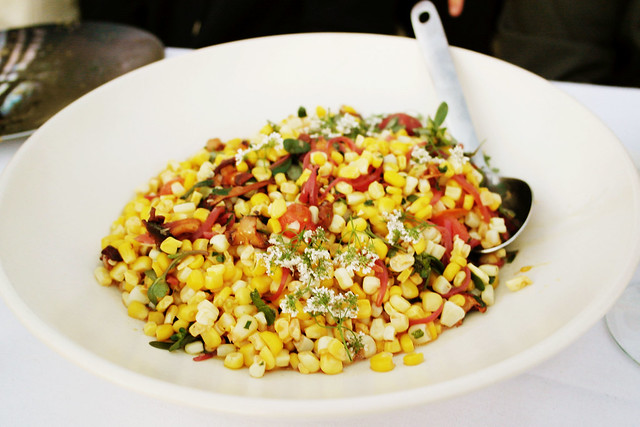
The side dish for the
pork rack was
corn with purslane, chanterelles, and sun gold tomatoes. It was a little reprise of the
corn soup we had as an hors d'oeuvre (sweet and chilling), but with a teaser of fall in the mix as chanterelles are in their prime in the coming season. Great accompaniment to the
pork rack.
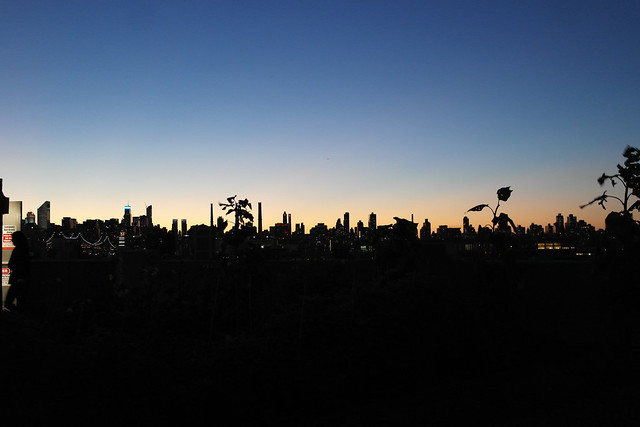
Approaching dusk at
Brooklyn Grange.
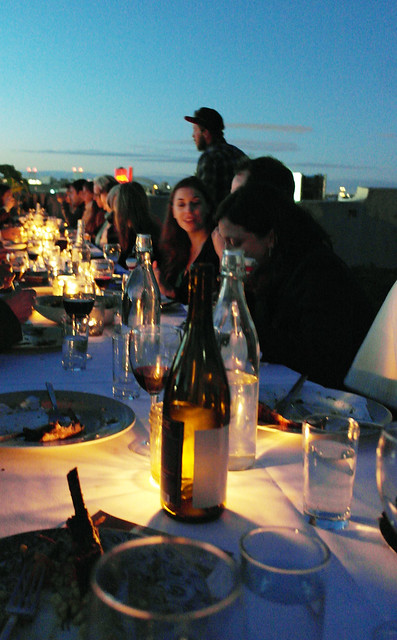
Dinner by candlelight à la mason jar, as
OITF tradition dictates! :P

We were given a tub of
brown butter-sage ice cream to be served alongside our last course (dessert).
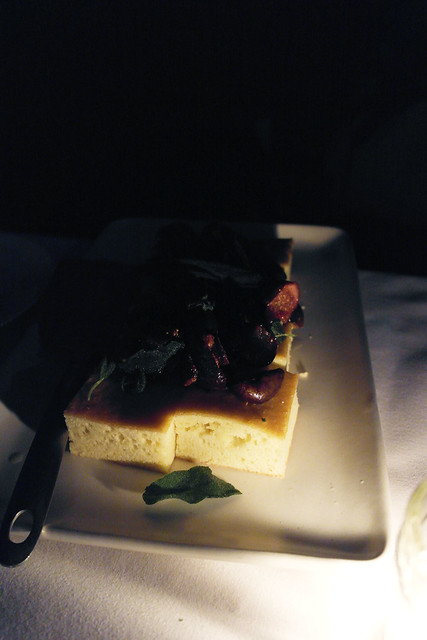
Dessert consisted of an
olive oil cake with roasted figs, meant to be served with the
brown butter sage ice cream. The cake had a favorable denseness to it -- quite moist while being able to soak up the creaminess of the savory ice cream without losing the great consistency of the cake. While the brown butter, sage, and olive oil flavors turned this into a much more savory dessert, only to be brought back slightly to the sweeter side with the roasted figs, which just had the right amount of sweet.
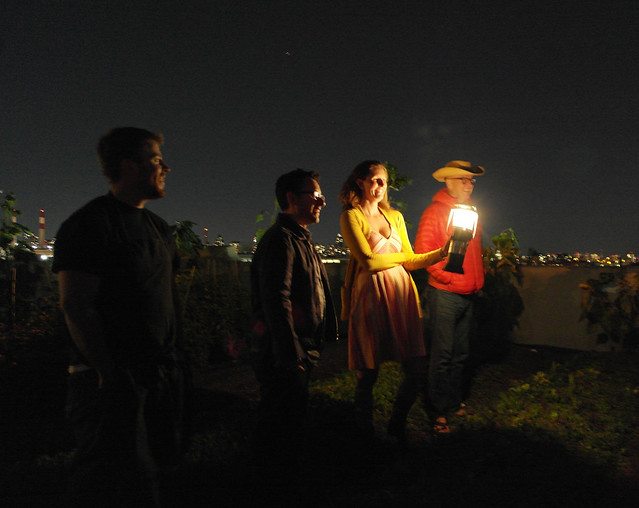
Jim Denevan, Leah Scafe (director of OITF), Chef Ortuzar, and his team from
Riverpark greeting guests that night at the end of our farm dinner.
Findings: I probably say this every time I leave a farm dinner with
Outstanding in the Field, but I think this year was by far my most favorite dinner -- if only because I thought Chef Sisha Ortuzar made the most dynamic and flavorful use of hyper-locally sourced produce and ingredients. This may come as unfair as Chef Ortuzar does this same exercise at
Riverpark as the restaurant sources most of its menu from the eponymous urban farm located right next door on the same campus so the challenge may not be as prominent as it would be for other chefs whose sourcing radius is a little broader. The real challenge for Chef Ortuzar may have remain in the sheer number of guests for which he had to cook up this extraordinary dinner. It didn't seem to faze him or his team as the dinner went quite smoothly without a hitch -- even as the sit-down courses were all served family style, everything was beautifully presented and tasted just as gorgeous as it had appeared on the plate. And as lovely as the food was, the service team was delightful and pleasant during the course of our dinner, making everything that much more seamless and enjoyable.
And as I appreciate with all
OITF dinners, I loved how we can get together as a group every year over this fabulous meal, meet other food enthusiasts who appreciate this kind of thing, and hear personal stories from farmers/purveyors/artisans about the very ingredients that were prepared before us. It is truly an unparalleled experience -- traditions are close to the heart for this very reason, and I am thankful I get to spend it with these fantastic friends of mine each year.
Thank you to the team behind
Outstanding in the Field for organizing yet another unforgettable dinner here in New York City! Already looking forward to the next year's farm dinner (and maybe even one at Secret Sea Cove over in California if Marcus and I are fast enough to nab a couple seats!).
Price point: $230 for a 100% locally supplied 5-course dinner with wine pairing by local winery.
--September 14, 2013
Outstanding in the Field
P.O. Box 2413
Santa Cruz, CA 95063
http://www.outstandinginthefield.com
Brooklyn Grange*
37-18 Northern Blvd
Queens, NY 11101
http://www.brooklyngrangefarm.com
Riverpark
450 East 29th Street
New York, NY 10016
http://www.riverparknyc.com
Brooklyn Oenology Winery*
209 Wythe Avenue
Brooklyn, NY 11211
http://www.brooklynoenology.com
Sfoglini Pasta Shop*
630 Flushing Avenue, 8th Floor
Brooklyn, NY 11206
http://www.sfoglini.com
Bodhitree Farm
2116 Jacksonville Road
Jobstown, NJ 08022
http://www.bodhitreefarm.com
Paffenroth Gardens
95 Little York Road
Warwick, NY 10990
http://hudsonvalleybounty.com/listing/paffenroth-gardens
Locust Grove Fruit Farm
154 North Road
Milton, NY 12547
http://www.locustgrovefruitfarm.com
Migliorelli Farm
46 Freeborn Lane
Tivoli, NY 12583
John Fazio Farms
497 Freetown Highway
Modena, NY 12548
Prospect Hill Orchards
73 Clark's Lane
Milton, NY 12547
S. & S. O. Farms
234 Mount Eve Road
Goshen, NY 10924
Heritage Pork International
206 First Street
Seargent Bluff, IA, 51054-0668
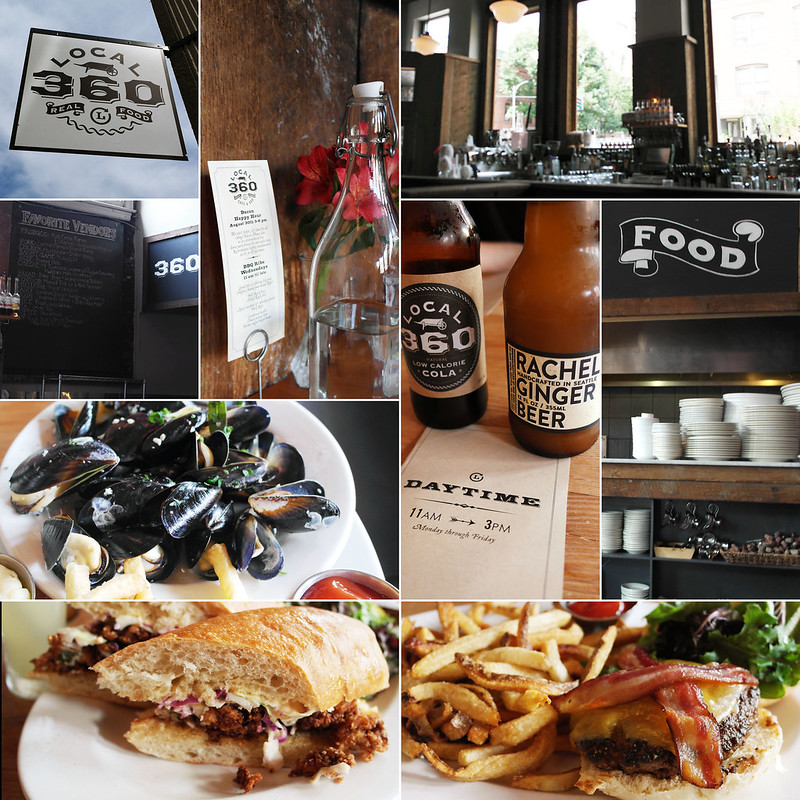
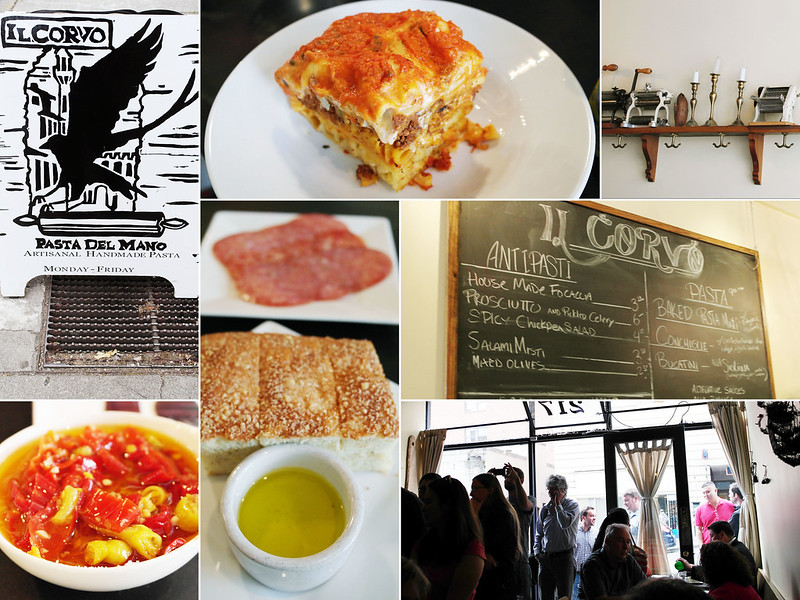 We made sure to order {4} some homemade focaccia as well as the salami misti to nibble on while we waited for our pasta dishes to come out of the kitchen. Really fresh focaccia that was perfect for sweeping up pasta sauce later on. The salami was well-cured and gave a savory start to our lunch. {2} We both had the baked pasta misti with bolognese and béchamel -- essentially a traditional Italian lasagna (as indicated by the inclusion of béchamel) made using three varieties of pasta as the layers (other than lasagna pasta sheets). Quite possibly the best lasagna dish I've ever had because it was the perfect amount of sauce, meat, and creaminess/cheesiness without feeling overwhelmed or overdone, where the pasta wasn't drowning in sauce or cheese. Plus, the fact that all of the pastas were made by hand just made it THAT much more enjoyable. We also had a side of the al infierno sauce just to give it a taste. It had a sweet-and-spicy kick to it and would go great in a fra diavlo pasta dish.
We made sure to order {4} some homemade focaccia as well as the salami misti to nibble on while we waited for our pasta dishes to come out of the kitchen. Really fresh focaccia that was perfect for sweeping up pasta sauce later on. The salami was well-cured and gave a savory start to our lunch. {2} We both had the baked pasta misti with bolognese and béchamel -- essentially a traditional Italian lasagna (as indicated by the inclusion of béchamel) made using three varieties of pasta as the layers (other than lasagna pasta sheets). Quite possibly the best lasagna dish I've ever had because it was the perfect amount of sauce, meat, and creaminess/cheesiness without feeling overwhelmed or overdone, where the pasta wasn't drowning in sauce or cheese. Plus, the fact that all of the pastas were made by hand just made it THAT much more enjoyable. We also had a side of the al infierno sauce just to give it a taste. It had a sweet-and-spicy kick to it and would go great in a fra diavlo pasta dish.

























